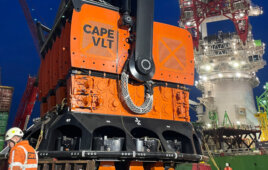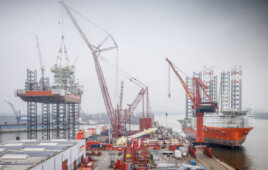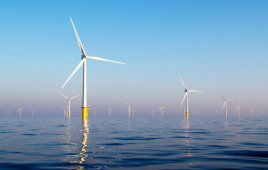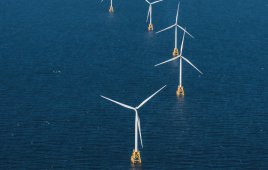The Nordex Group says it performed in line with its expectations during the first quarter of 2017. Most notably, the proportion of sales generated in America increased, where the group has a larger footprint following the merger with Acciona Windpower.

Nordex’s proportion of sales generated in America has increased in Q1 2017, following the merger with Acciona Windpower
Overall, sales amounted to EUR 648.4 million (Q1/2016: EUR 637 million). The service business rose substantially by 57% to EUR 74 million (Q1/2016: EUR 47.1 million).
Earnings before interest, taxes, depreciation, and amortization (EBITDA) amounted to EUR 51.2 million. At 7.9%, the operating margin was within the target corridor, chiefly underpinned by an increased gross margin of 29%, which reflects the growing service business.
“Our medium-term goal is to improve market share and profitability,” said Nordex CEO José Luis Blanco. “For this reason, we are stepping up spending on our technology, as well as lowering production costs.”
Nordex continues to have a solid balance-sheet structure. The equity ratio stood at 33% as of the reporting date (December 31, 2016: 31.4%). In preparation for rising installation volume over the upcoming quarters, the group has accumulated inventories, temporarily causing the working capital ratio to rise to 8.4%.
At the same time, capital spending climbed to EUR 35.7 million (Q1/2016: EUR 15.1 million). This was primarily due to the acquisition of plant and equipment for the production of new core components. Nordex continued to invest in the development of new competitive products.
The transition to auction based mechanism, in the core European markets, caused group order intake to drop to EUR 333 million (Q1/2016: EUR 541 million).
As of the reporting date, Nordex had an order backlog of EUR 3.8 billion (incl. Service), which forms the basis for confirming the full-year guidance for 2017. Thus, sales are expected to lie within the range of EUR 3.1 to 3.3 billion, accompanied by an EBITDA margin of between 7.8 and 8.2 percent. The Management Board expects the working capital ratio to drop to 5 to 7% in the second half of the year due to prepayments for new orders.
Filed Under: Financing, News




